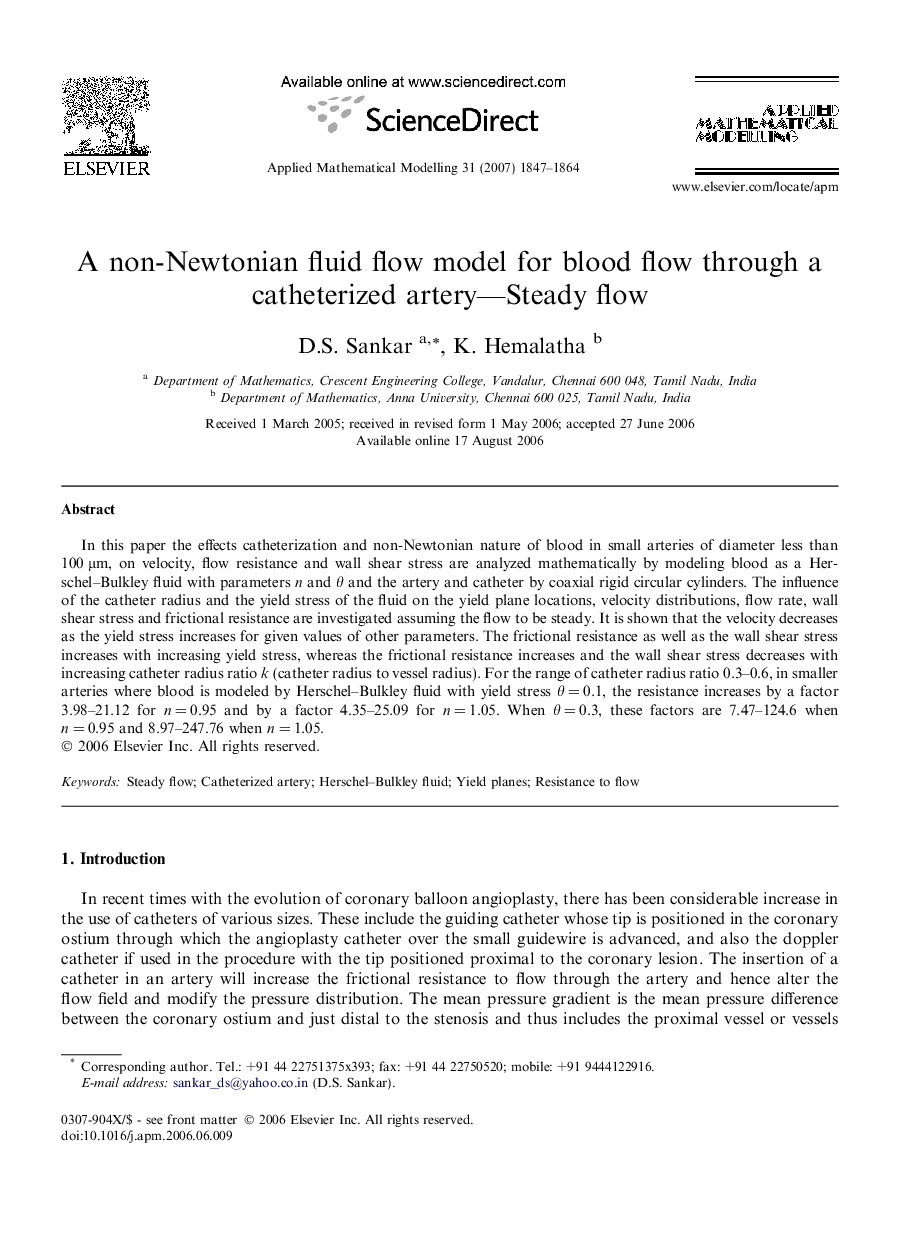| Article ID | Journal | Published Year | Pages | File Type |
|---|---|---|---|---|
| 1707059 | Applied Mathematical Modelling | 2007 | 18 Pages |
In this paper the effects catheterization and non-Newtonian nature of blood in small arteries of diameter less than 100 μm, on velocity, flow resistance and wall shear stress are analyzed mathematically by modeling blood as a Herschel–Bulkley fluid with parameters n and θ and the artery and catheter by coaxial rigid circular cylinders. The influence of the catheter radius and the yield stress of the fluid on the yield plane locations, velocity distributions, flow rate, wall shear stress and frictional resistance are investigated assuming the flow to be steady. It is shown that the velocity decreases as the yield stress increases for given values of other parameters. The frictional resistance as well as the wall shear stress increases with increasing yield stress, whereas the frictional resistance increases and the wall shear stress decreases with increasing catheter radius ratio k (catheter radius to vessel radius). For the range of catheter radius ratio 0.3–0.6, in smaller arteries where blood is modeled by Herschel–Bulkley fluid with yield stress θ = 0.1, the resistance increases by a factor 3.98–21.12 for n = 0.95 and by a factor 4.35–25.09 for n = 1.05. When θ = 0.3, these factors are 7.47–124.6 when n = 0.95 and 8.97–247.76 when n = 1.05.
